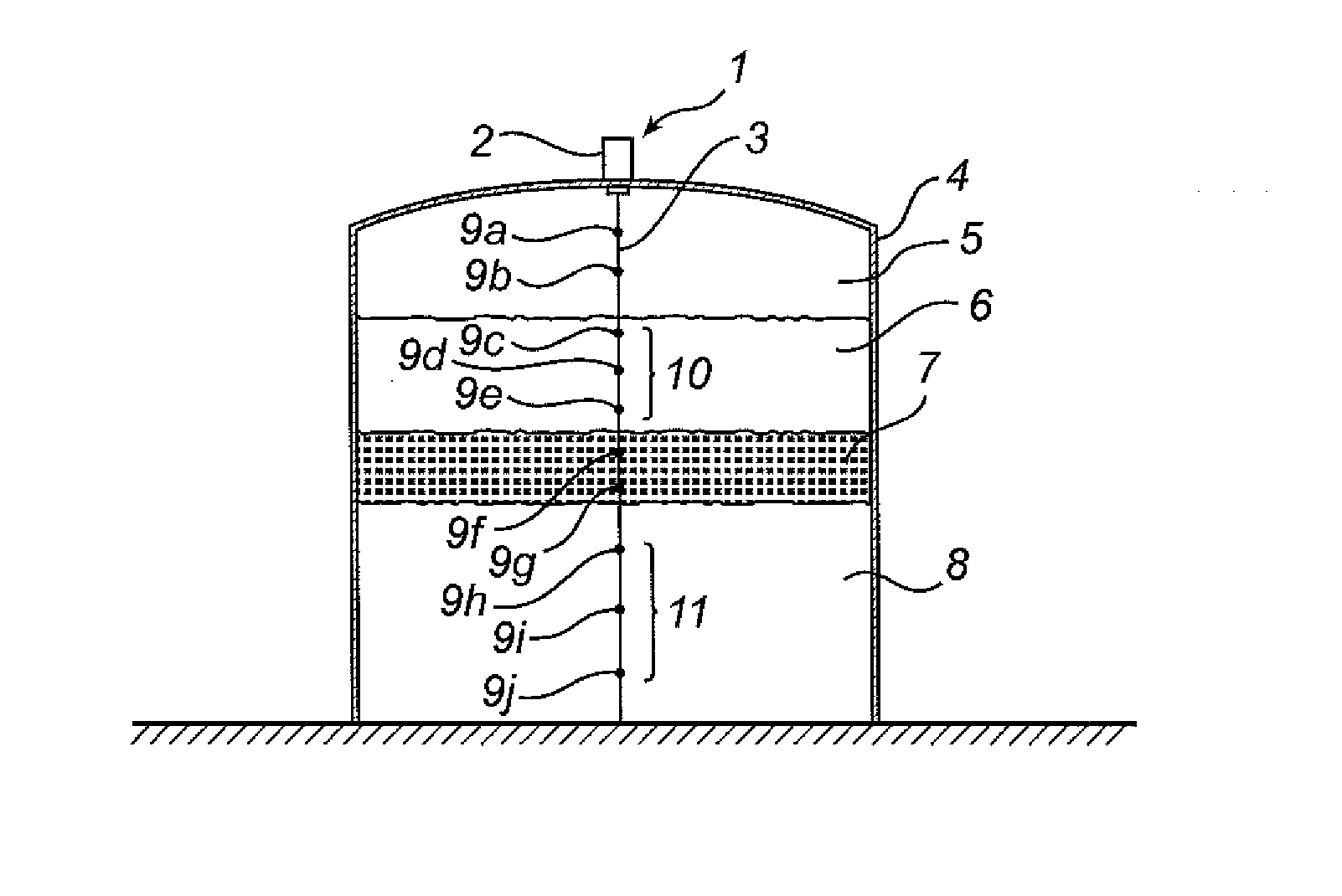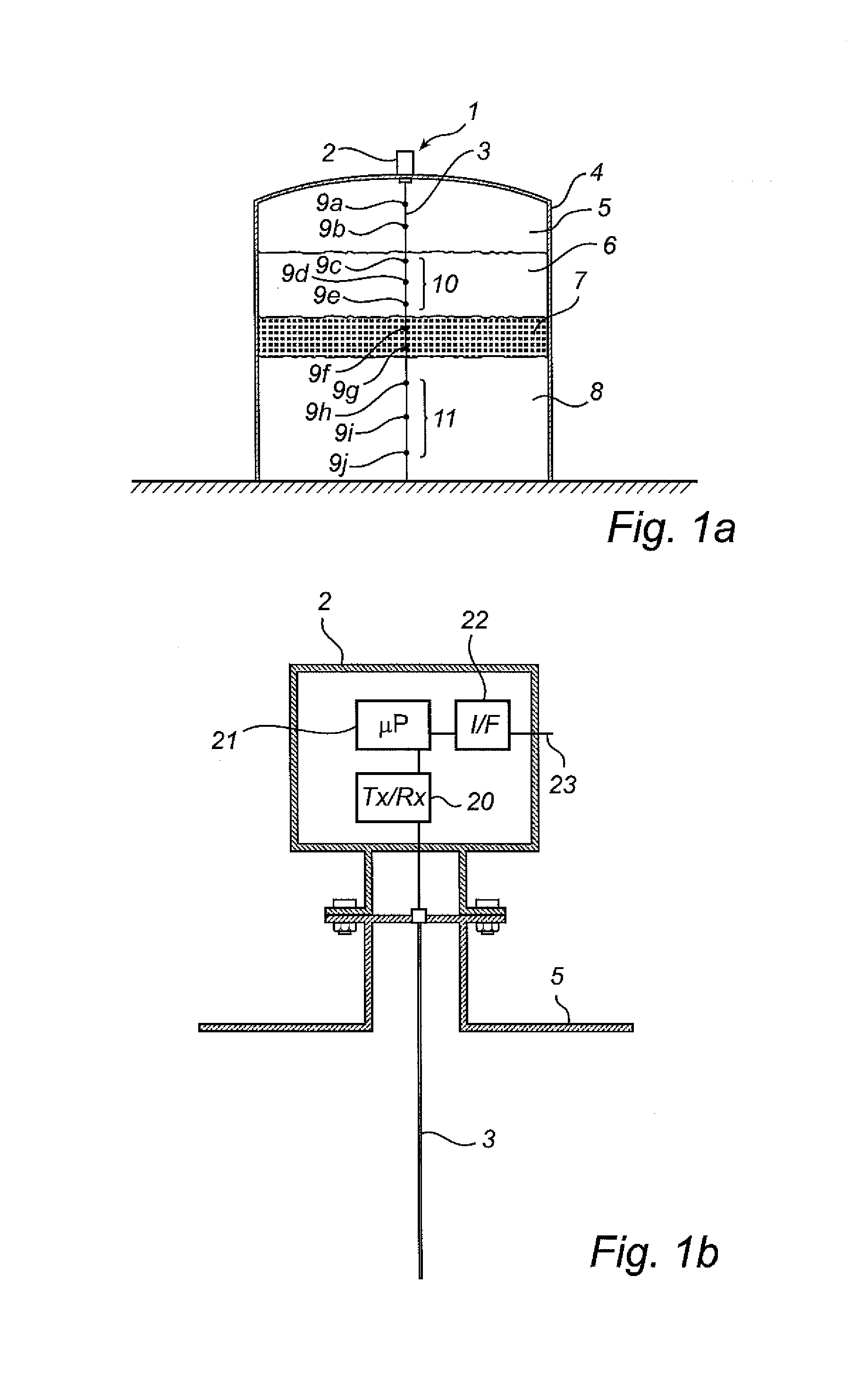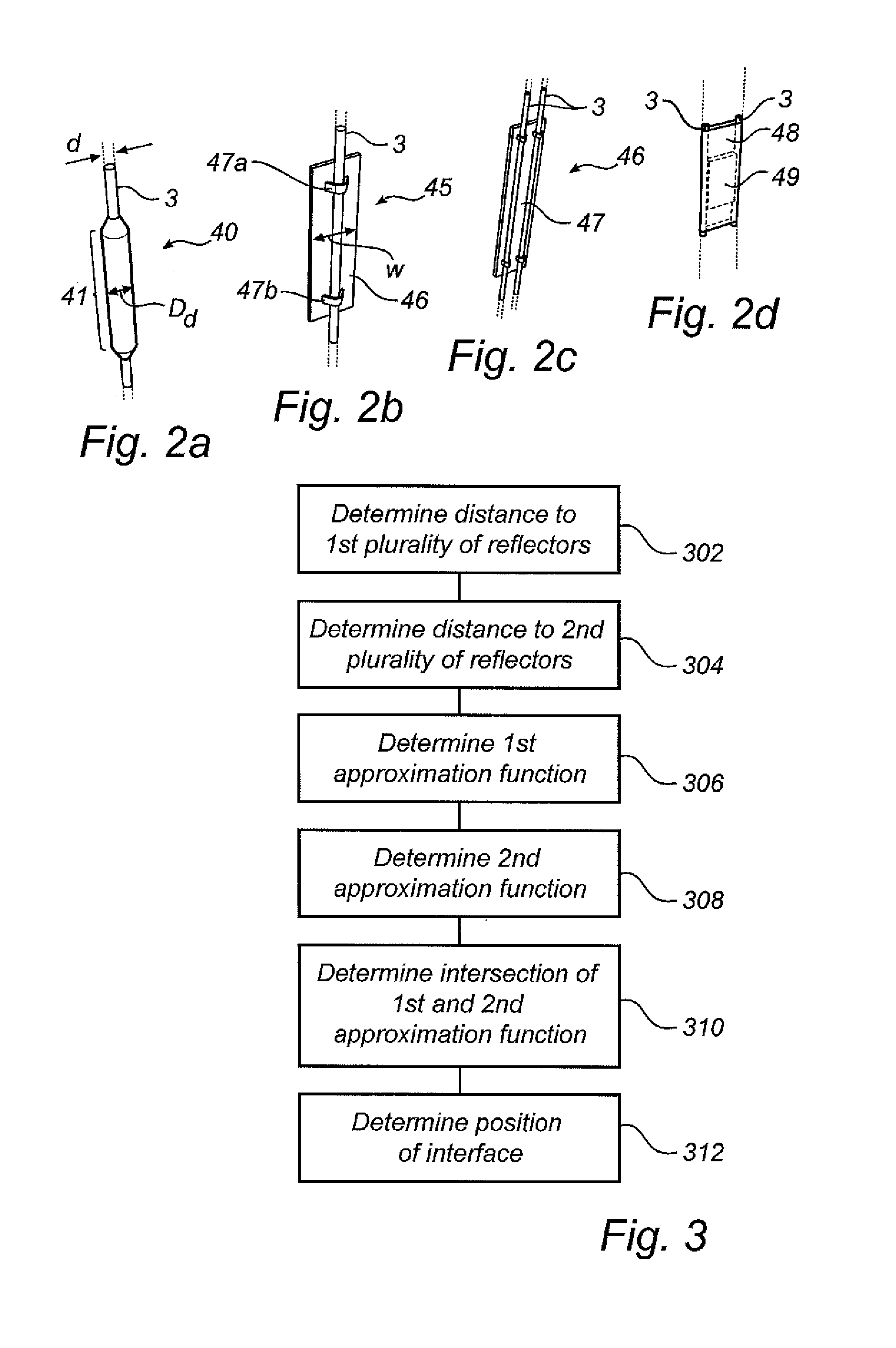Interface detection
a technology of interface detection and approximation function, applied in the field of interface detection, can solve the problems of inability to detect the interface, inability to predict the reduction of the reduced amplitude of the reflected signal, so as to improve the accuracy of the determination of the level of the interface, the effect of improving the accuracy of the approximation function
- Summary
- Abstract
- Description
- Claims
- Application Information
AI Technical Summary
Benefits of technology
Problems solved by technology
Method used
Image
Examples
Embodiment Construction
[0043]In the present detailed description, various embodiments of the method and the radar level gauge system for determining the level of an interface according to the present invention are mainly discussed with reference to a radar level gauge system having a twin line probe comprising a plurality of reference reflectors.
[0044]FIG. 1a schematically illustrates a radar level gauge system 1 according to an embodiment of the present invention, comprising a measurement electronics unit 2, and a probe 3 having a plurality of reference reflectors 9a-j. The radar level gauge system 1 is provided on a tank 4, which is partly filled with a product to be gauged. The tank contains a tank atmosphere 5, a first material 6, a second material 8 and an interface 7 between the two materials. By analyzing transmitted signals being guided by the probe 3 into the first material 6, through the material interface 7 and into the second material 8, the measurement electronics unit 2 can determine the dis...
PUM
 Login to View More
Login to View More Abstract
Description
Claims
Application Information
 Login to View More
Login to View More - R&D
- Intellectual Property
- Life Sciences
- Materials
- Tech Scout
- Unparalleled Data Quality
- Higher Quality Content
- 60% Fewer Hallucinations
Browse by: Latest US Patents, China's latest patents, Technical Efficacy Thesaurus, Application Domain, Technology Topic, Popular Technical Reports.
© 2025 PatSnap. All rights reserved.Legal|Privacy policy|Modern Slavery Act Transparency Statement|Sitemap|About US| Contact US: help@patsnap.com



